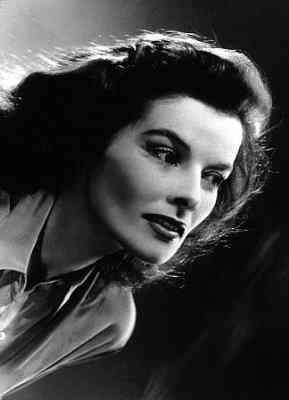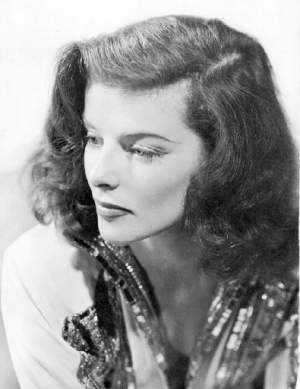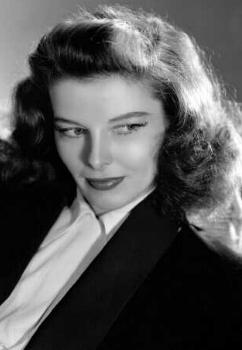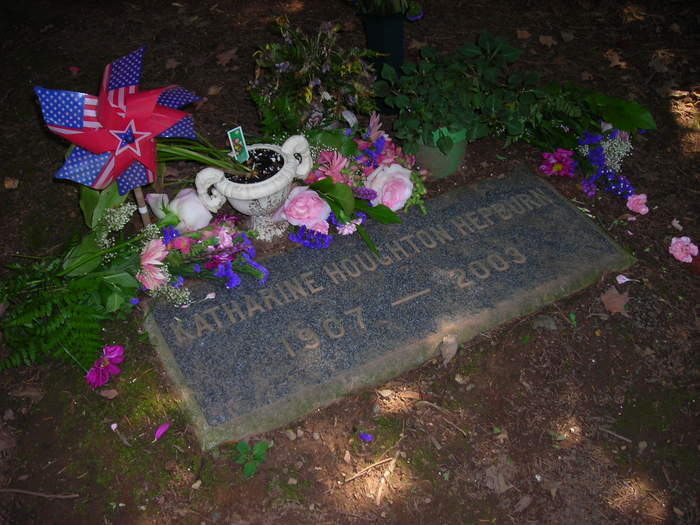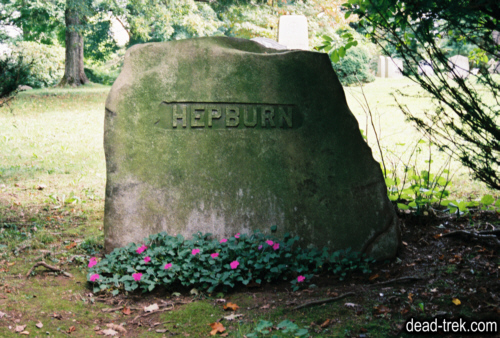Katharine Hepburn (Katharine Hepburn)
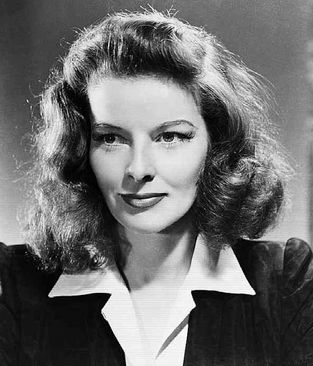
Katharine Hepburn
Hepburn was born in Hartford, Connecticut, on May 12, 1907, the second of six children. Her parents were Thomas Norval Hepburn (1879–1962), a urologist at Hartford Hospital, and Katharine Martha Houghton (1878–1951), a feminist campaigner. Both fought for social change in America: Thomas Hepburn helped establish the New England Social Hygiene Association, which educated the public about venereal disease, while Katharine Martha headed the Connecticut Woman Suffrage Association and later campaigned for birth control with Margaret Sanger. As a child, Hepburn joined her mother on several “Votes For Women” demonstrations. The Hepburn children were raised to exercise freedom of speech and encouraged to think and debate on any topic they wished. Her parents were criticized by the community for their progressive views, which stimulated Hepburn to fight against barriers she encountered. Hepburn said she realized from a young age that she was the product of “two very remarkable parents”, and credited her “enormously lucky” upbringing with providing the foundation for her success. She remained close to her family throughout her life. The young Hepburn was a tomboy who liked to call herself Jimmy, and cut her hair short like a boy’s. Thomas Hepburn was eager for his children to use their minds and bodies to the limit, and taught them to swim, run, dive, ride, wrestle, and play golf and tennis. Golf became a passion for his oldest daughter: she took daily lessons and became very adept, reaching the semi-final of the Connecticut Young Women’s Golf Championship. She loved swimming in Long Island Sound, and took ice-cold baths every morning in the belief that “the bitterer the medicine, the better it was for you.” Hepburn was a fan of movies from a young age, and went to see one every Saturday night. She would put on plays and perform for her neighbors with friends and siblings for 50 cents a ticket to raise money for the Navajo people. On April 3, 1921, while visiting friends in Greenwich Village, Hepburn discovered the body of her older brother, Tom (whom she adored), dead from an apparent suicide. He had tied a sheet around a beam and hanged himself. The Hepburn family denied it was suicide and maintained that Tom’s death must have been an experiment that had gone wrong. The incident made the teenage Hepburn nervous, moody, and suspicious of people. She shied away from other children, dropped out of Oxford School, and began receiving private tutoring. For many years she used Tom’s birthday (November 8) as her own. It was not until her 1991 autobiography, Me: Stories of My Life, that Hepburn revealed her true birth date. In 1924 Hepburn gained a place at Bryn Mawr College. She attended the institution primarily to satisfy her mother, who had studied there, and recalled disliking the experience. It was the first time she had been in school for several years, and she was self-conscious and uncomfortable with her classmates. She struggled with the scholastic demands of university, and once was suspended for smoking in her room. Hepburn was drawn to acting, but roles in college plays were conditional on good grades. Once her marks had improved, she began performing regularly. The lead role in a production of The Woman in the Moon in her senior year, and the positive response it received, cemented Hepburn’s plans to pursue a theatrical career. She graduated with a degree in history and philosophy in June 1928.
A scout for the Hollywood agent Leland Hayward spotted Hepburn’s appearance in The Warrior’s Husband, and asked her to test for the part of Sydney Fairfield in the upcoming RKO film A Bill of Divorcement. Director George Cukor was impressed by what he saw: “There was this odd creature,” he recalled, “she was unlike anybody I’d ever heard.” He particularly liked the manner in which she picked up a glass: “I thought she was very talented in that action.” Offered the role, Hepburn demanded $1,500 a week, a large amount for an unknown actress. Cukor encouraged the studio to accept her demands and they signed Hepburn to a temporary contract with a three-week guarantee. RKO head David O. Selznick recounted that he took a “tremendous chance” in casting the unusual actress. Hepburn arrived in California in July 1932, at 25 years old. She starred in A Bill of Divorcement opposite John Barrymore, but showed no sign of intimidation. Although she struggled to adapt to the nature of film acting, Hepburn was fascinated by the industry from the start. The picture was a success and Hepburn received positive reviews. Mordaunt Hall of The New York Times called her performance “exceptionally fine … Miss Hepburn’s characterization is one of the finest seen on the screen”. The Variety review declared, “Standout here is the smash impression made by Katharine Hepburn in her first picture assignment. She has a vital something that sets her apart from the picture galaxy.” On the strength of A Bill of Divorcement, RKO signed the actress to a long-term contract. George Cukor became a lifetime friend and colleague—he and Hepburn made ten films together.
Hepburn’s second film was Christopher Strong (1933), the story of an aviatrix and her affair with a married man. The picture was not commercially successful, but Hepburn’s own reviews were good. Regina Crewe wrote in the Journal American that although her mannerisms were grating, “they compel attention, and they fascinate an audience. She is a distinct, definite, positive personality.” Hepburn’s third picture confirmed her as a major actress in Hollywood. For playing aspiring actress Eva Lovelace in Morning Glory, she won an Academy Award for Best Actress. She had seen the script on the desk of producer Pandro S. Berman and, convinced that she was born to play the part, insisted that the role be hers. Hepburn chose not to attend the awards ceremony—as she would not for the duration of her career—but was thrilled with the win. Her success continued with the role of Jo in a screen adaptation of Little Women (1933). The picture was a hit, one of the film industry’s biggest successes to date, and Hepburn won the Best Actress prize at the Venice Film Festival. Little Women was one of Hepburn’s personal favorites and she was proud of her performance, later saying, “I defy anyone to be as good [as Jo] as I was”. By the end of 1933 Hepburn was a respected film actress, but she yearned to prove herself on Broadway. Jed Harris, one of the most successful theatre producers of the 1920s, was going through a career slump. He asked Hepburn to appear in the play The Lake, which she agreed to do for a low salary. Before she was given leave, RKO asked that she film Spitfire (1934). Hepburn’s role in the movie was Trigger Hicks, an uneducated mountain girl. It is widely considered one of her worst films, and Hepburn received poor reviews for the effort. She kept a picture of Hicks in her bedroom throughout her life to “[keep] me humble.” The Lake previewed in Washington, D.C., where there was a large advance sale. Harris’s poor direction had eroded Hepburn’s confidence, and she struggled with the performance. Despite this, Harris moved the play to New York without further rehearsal. It opened at the Martin Beck Theatre on December 26, 1933, and Hepburn was roundly panned by the critics. Dorothy Parker quipped, “Katharine Hepburn runs the gamut of emotions from A to B.” Already tied to a ten-week contract, she had to endure the embarrassment of rapidly declining box office sales. Harris decided to take the show to Chicago, saying to Hepburn, “My dear, the only interest I have in you is the money I can make out of you.” Hepburn refused, and paid Harris $14,000 to close the production instead. She later referred to Harris as “hands-down the most diabolical person I have ever met”, and claimed this experience was important in teaching her to take responsibility for her career.
After the failure of Spitfire and The Lake, RKO cast Hepburn in The Little Minister (1934), based on a Victorian novel by James Barrie, in an attempt to repeat the success of Little Women. There was no such recurrence, and the picture was a commercial failure. The romantic drama Break of Hearts (1935) with Charles Boyer was poorly reviewed and also lost money. After three forgettable films, success returned to Hepburn with Alice Adams (1935), the story of a girl’s desperation to climb the social ladder. Hepburn loved the book and was delighted to be offered the role. The film was a hit, one of Hepburn’s personal favorites, and gave the actress her second Oscar nomination. Given the choice of her next feature, Hepburn decided to star in George Cukor’s new project, Sylvia Scarlett (1935), which paired her for the first time with Cary Grant. Her hair was cut short for the part, as her character masquerades as a boy for much of the film. Critics disliked Sylvia Scarlett and it was unpopular with the public. She next played Mary Stuart in John Ford’s Mary of Scotland (1936), which met with a similarly poor reception. A Woman Rebels (1937) followed, a Victorian era drama where Hepburn’s character fights against convention. Quality Street (1937) also had a period setting, this time a comedy. Neither movie was popular with the public, which meant she had made four unsuccessful pictures in a row. Alongside a series of unpopular films, problems arose from Hepburn’s attitude. She had a difficult relationship with the press, with whom she could be rude and provocative. When asked if she had any children, she snapped back, “Yes I have five: two white and three colored.” She would not give interviews and denied requests for autographs, which earned her the nickname “Katharine of Arrogance”. The public was also baffled by her boyish behavior and fashion choices, and she became a largely unpopular figure. Hepburn sensed that she needed to leave Hollywood, so she returned east to star in a theatrical adaptation of Jane Eyre. It had a successful tour, but, uncertain about the script and unwilling to risk failure after the disaster of The Lake, Hepburn decided against taking the show to Broadway. Towards the end of 1936, Hepburn vied for the role of Scarlett O’Hara in Gone With The Wind. Producer David O. Selznick refused to offer her the part because he felt she had no sex appeal. He reportedly told Hepburn, “I can’t see Rhett Butler chasing you for twelve years.” Hepburn’s next feature, Stage Door (1937), paired her with Ginger Rogers in a role which mirrored her own life—that of a wealthy society girl trying to make it as an actress. Hepburn was praised for her work at early previews, which gave her top billing over Rogers. The film was nominated for Best Picture at the Academy Awards, but it was not the box-office hit RKO had hoped for. Industry pundits blamed Hepburn for the small profit, but the studio continued its commitment to resurrecting her popularity. She was cast in Howard Hawks’ screwball comedy Bringing Up Baby (1938) alongside Cary Grant. Hepburn played the physical comedy of the film with confidence, and took tips on comedic timing from her costar Walter Catlett. Bringing Up Baby was acclaimed by critics, but it was nevertheless unsuccessful at the box-office. With the genre and Grant both hugely popular at the time, biographer A. Scott Berg believes the blame lay with moviegoers’ rejection of Hepburn. After the release of Bringing up Baby, the Independent Theatre Owners of America included Hepburn on a list of actors considered “Box Office Poison”. Her reputation at a low, the next film RKO offered her was Mother Carey’s Chickens, a B movie with poor prospects. Hepburn turned it down, and instead opted to buy herself out of her contract for $75,000. Many actors were afraid to leave the stability of the studio system at the time, but Hepburn’s personal wealth meant she could afford to be independent. She signed on for the film version of Holiday (1938) with Columbia Pictures, pairing her for the third time with Grant. The comedy was well received by critics, but it failed to draw much of an audience, and the next script offered to Hepburn came with a salary of $10,000—less than she had received at the start of her film career. Reflecting on this change in fortunes, Andrew Britton writes of Hepburn, “No other star has emerged with greater rapidity or with more ecstatic acclaim. No other star, either, has become so unpopular so quickly for so long a time.”
Following this decline in her career, Hepburn took action to create her own comeback vehicle. She left Hollywood to look for a stage project, and signed on to star in Philip Barry’s new play, The Philadelphia Story. It was tailored to showcase the actress, with the character of socialite Tracy Lord incorporating a mixture of humor, aggression, nervousness, and vulnerability. Howard Hughes, Hepburn’s partner at the time, sensed that the play could be her ticket back to Hollywood stardom and bought her the film rights before it even debuted on stage. The Philadelphia Story first toured the United States, to positive reviews, and then opened in New York at the Schubert Theatre on March 29, 1939. It was a big hit, critically and financially, running for 417 performances and then going on a second successful tour. Several of the major film studios approached Hepburn to produce the movie version of Barry’s play. She chose to sell the rights to Metro-Goldwyn-Mayer (MGM), Hollywood’s number one studio, on the condition that she be the star. As part of the deal she also received the director of her choice, George Cukor, but the costars she wanted, Clark Gable and Spencer Tracy, were both unavailable. Louis B. Mayer promised her James Stewart and $150,000 “for anyone else you want or can get.”[106] Hepburn chose her friend and previous costar, Cary Grant, to whom she ceded top billing. Before filming began, Hepburn shrewdly noted, “I don’t want to make a grand entrance in this picture. Moviegoers … think I’m too la-di-da or something. A lot of people want to see me fall flat on my face.” Thus the film began with Grant knocking the actress flat on her backside. Berg describes how the character was crafted to have audiences “laugh at her enough that they would ultimately sympathize with her”, which Hepburn felt was crucial in “recreating” her public image. The Philadelphia Story was one of the biggest hits of 1940, breaking records at Radio City Music Hall. The review in Time declared, “Come on back, Katie, all is forgiven.” Herb Golden of Variety stated, “It’s Katharine Hepburn’s picture … The perfect conception of all flighty but characterful Main Line socialite gals rolled into one, the story without her is almost inconceivable.” Hepburn was nominated for her third Academy Award for Best Actress, and won the New York Film Critics Circle Award for Best Actress. Hepburn was also responsible for the development of her next project, the romantic comedy Woman of the Year. The idea for the film was proposed to her by Garson Kanin in 1941. Hepburn passed the outline onto Joseph L. Mankiewicz at MGM, who expressed an interest in the picture. Kanin recalled how Hepburn contributed to the script, suggesting cuts and word changes, and provided helpful enthusiasm for the project. Hepburn presented the finished product to MGM and demanded $250,000—half for her, half for the authors, Michael Kanin and Ring Lardner, Jr. Her terms accepted, Hepburn was also given the director and costar of her choice, George Stevens and Spencer Tracy. Released in 1942, Woman of the Year was another success. Critics praised the chemistry between the stars, and, says Higham, noted Hepburn’s “increasing maturity and polish”. The World-Telegram commended two “brilliant performances”, and Hepburn received a fourth Academy Award nomination for her role as independent career-woman Tess Harding. During the course of the movie, Hepburn signed a star contract with MGM.
Hepburn’s only husband was Ludlow Ogden Smith, a socialite-businessman from Philadelphia whom she met while a student at Bryn Mawr. The couple married on December 12, 1928, when she was 21 and he was 29. Hepburn had Smith change his name to S. Ogden Ludlow so that she would not be known as “Kate Smith”, which she considered too plain. She never fully committed to the relationship and prioritized her career. The move to Hollywood in 1932 cemented the couple’s estrangement, and in 1934, she traveled to Mexico to get a quick divorce. Hepburn often expressed her gratitude toward Smith for his financial and moral support in the early days of her career, and in her autobiography called herself “a terrible pig” for exploiting his love. The pair remained friends until his death in 1979. Soon after moving to California, Hepburn began a relationship with her agent, Leland Hayward, although they were both married. Hayward proposed to the actress once they had each divorced; she declined this, later explaining, “I liked the idea of being my own single self.” They were involved for four years. In 1936, while she was touring Jane Eyre, Hepburn began a relationship with entrepreneur Howard Hughes. They first met while Hepburn was filming Sylvia Scarlett, when they were introduced by their mutual friend Cary Grant. Hughes wished to marry her, and the tabloids reported their impending nuptials, but at that time Hepburn was too focused on resurrecting her failing career. They separated in 1938, when Hepburn left Hollywood after being labeled “box office poison”. Hepburn stuck to her decision not to remarry, and made a conscious choice not to have children. She believed that motherhood should be a full-time commitment, and said it was not one she was willing to make. “I would have been a terrible mother,” she told Berg, “because I’m basically a very selfish human being.” She felt she had partially experienced parenthood through her much younger siblings, which fulfilled any need to have children of her own. Rumors have existed since the 1930s that Hepburn may have been a lesbian or bisexual, which she often joked about. In 2007, William J. Mann released a biography of the actress in which he argued this was the case. In response to this speculation about her aunt, Katharine Houghton said, “I’ve never discovered any evidence whatsoever that she was a lesbian.”
Hepburn stated in her eighties, “I have no fear of death. Must be wonderful, like a long sleep.” Her health began to deteriorate not long after her final screen appearance. In the winter of 1996 she was hospitalized with pneumonia. By 1997 she had become very weak, was speaking and eating very little, and it was feared she would die. She showed signs of dementia in her final years. In May 2003, an aggressive tumor was found in Hepburn’s neck. The decision was made not to medically intervene, and she died on June 29, 2003, at the Hepburn family home in Fenwick, Connecticut. She was 96 years old and was buried in Cedar Hill Cemetery in Hartford. Hepburn requested that there be no memorial service. Hepburn’s death received considerable public attention. Many tributes were held on television, and newspapers and magazines dedicated issues to the actress. American president George W. Bush said Hepburn “will be remembered as one of the nation’s artistic treasures.” In honor of her extensive theatre work, the lights of Broadway were dimmed for the evening of July 1, 2003. In 2004, in accordance with Hepburn’s wishes, her belongings were put up for auction with Sotheby’s in New York. The event garnered $5.8 million, which Hepburn willed to her family.
Born
- May, 12, 1907
- Hartford, Connecticut
Died
- June, 29, 2003
- Fenwick, Connecticut
Cause of Death
- Natural causes
Cemetery
- Cedar Hill Cemetery
- Hartford, Connecticut


